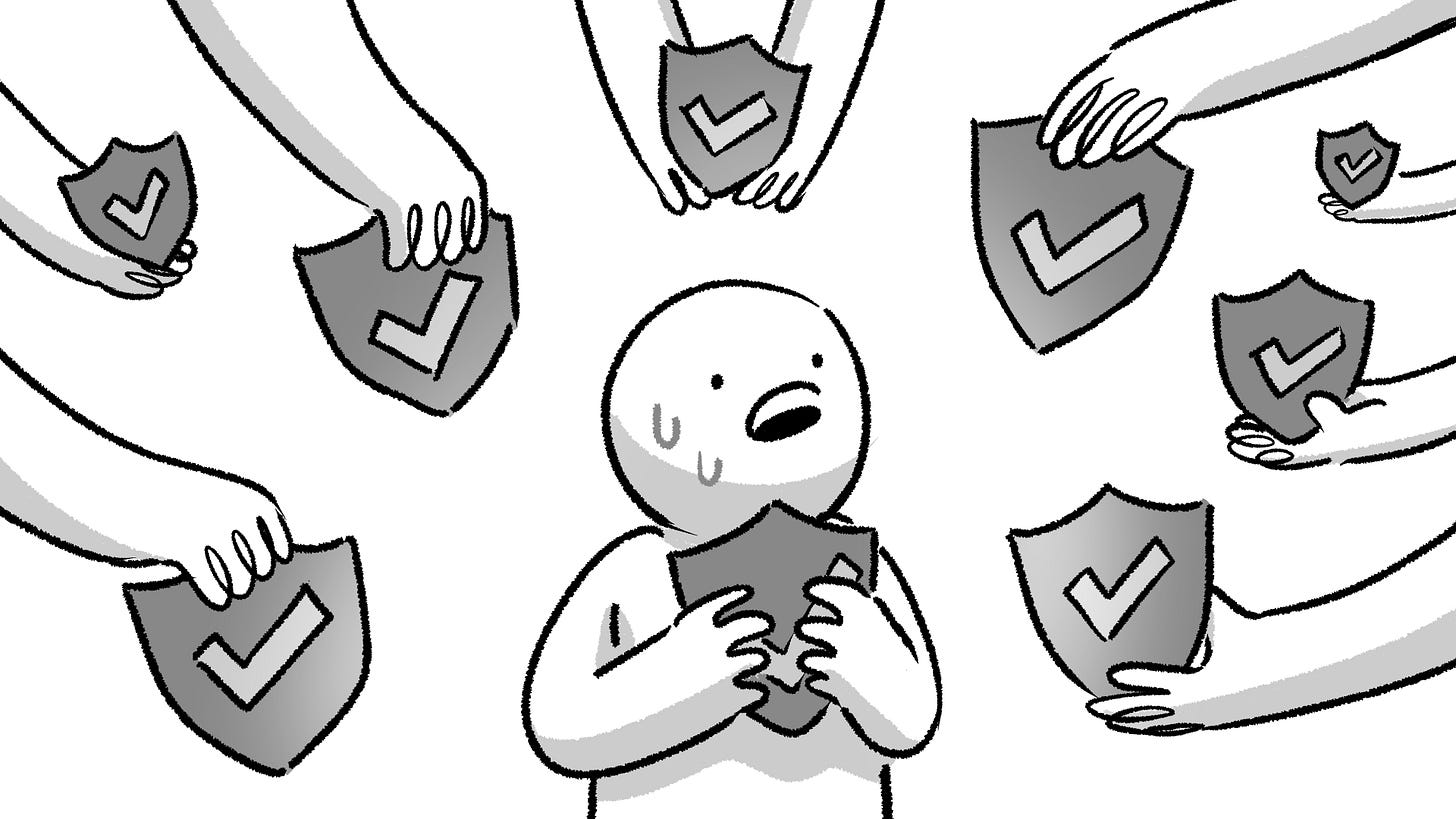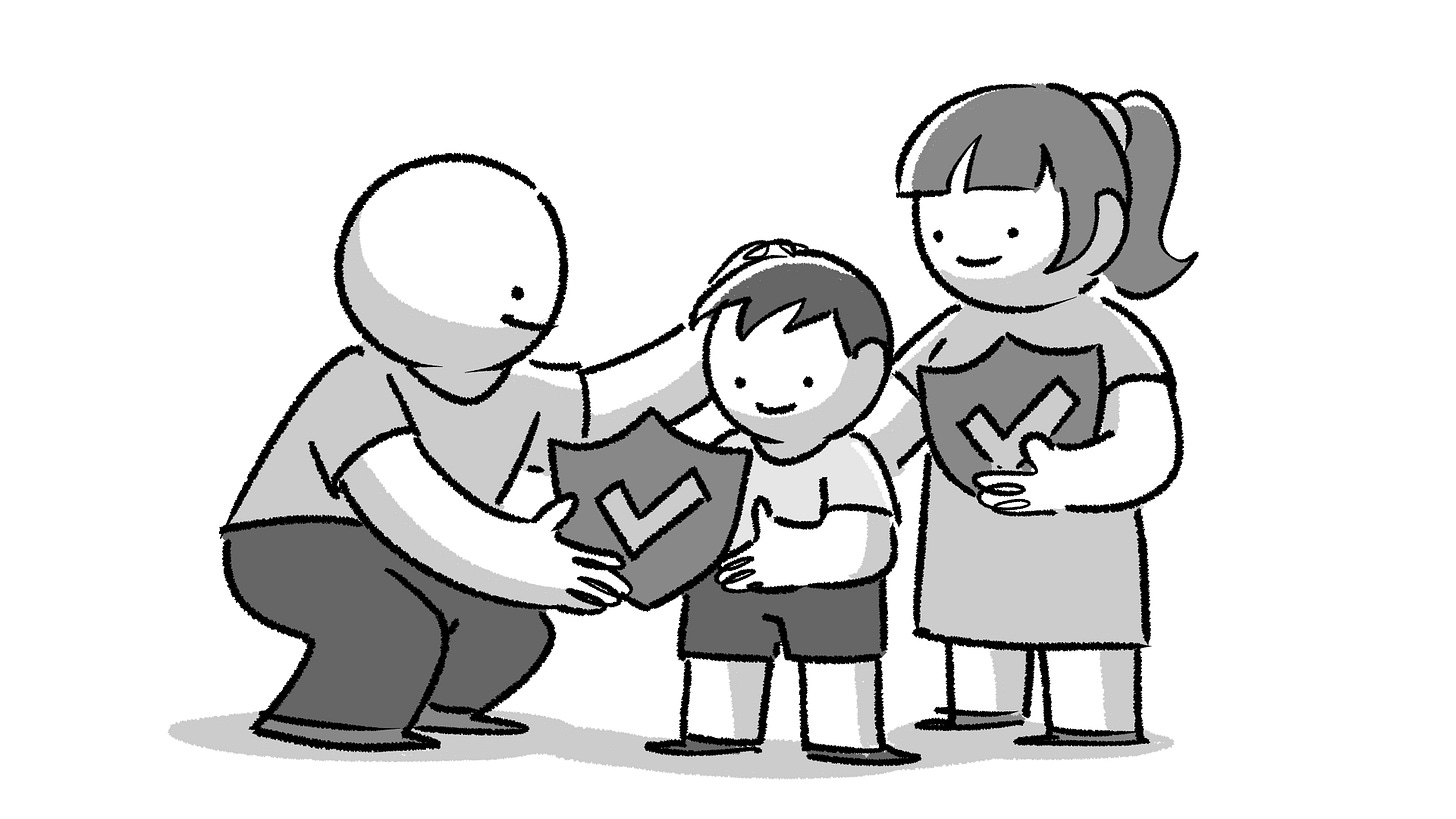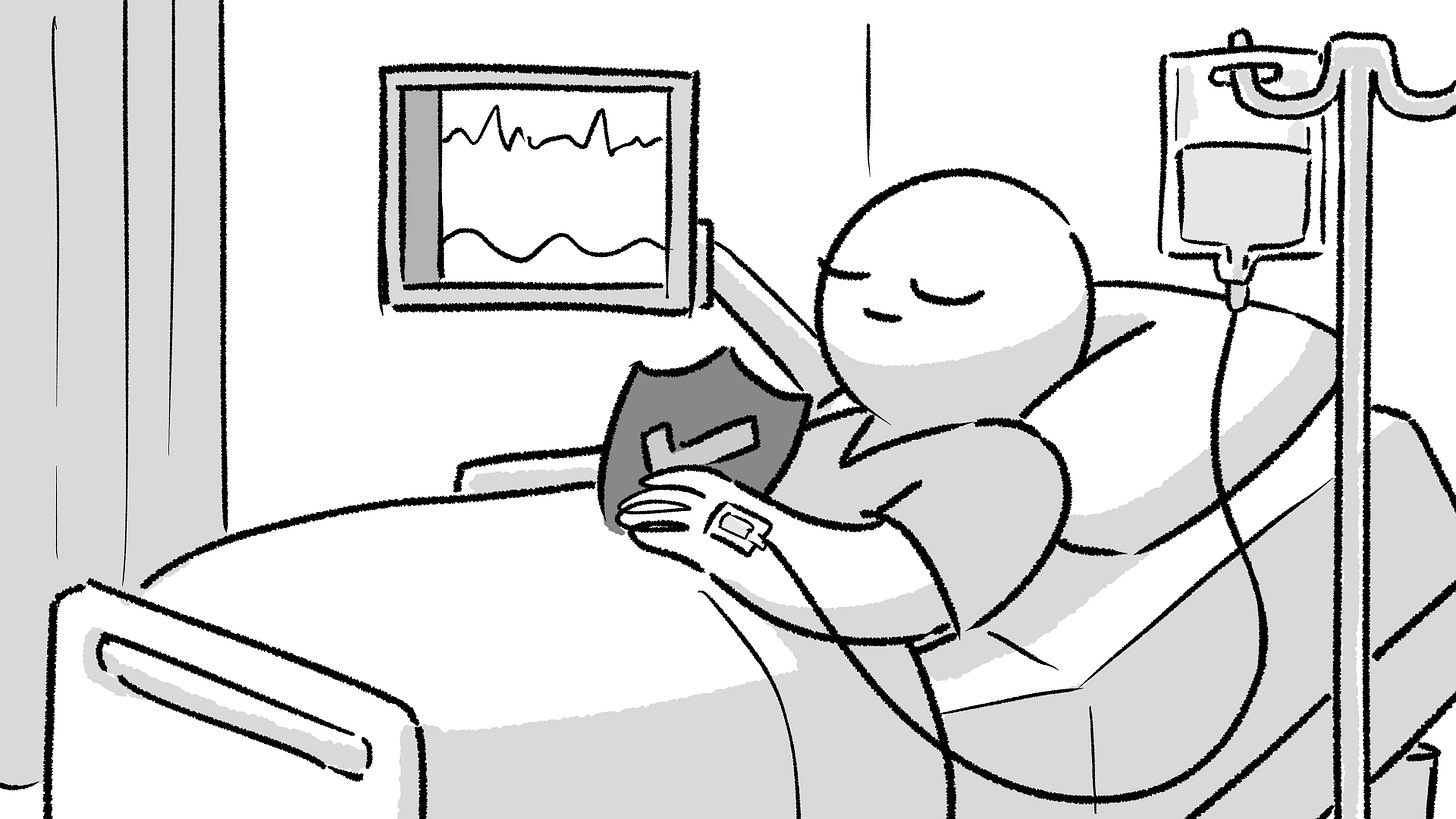Is there such a thing as ‘too much insurance’?
Sometimes over-preparedness might not always pay off.
DISCLAIMER: THIS ARTICLE IS BROUGHT TO YOU BY THE MINISTRY OF HEALTH. DO NOT READ IF YOU’RE ALLERGIC TO SPONSORED CONTENT.
Every time we publish something on The Woke Salaryman remotely related to insurance, many financial advisors will reshare our content… to sell insurance.
Don’t get us wrong.
We are glad for the increased page engagement. We too agree that getting insurance is important. However, we also believe that there’s such a thing as ‘too much insurance’.
In this article, we hope to clarify what we mean by ‘adequate insurance’. We’ll be focusing on the three most common types of insurance that people tend to overspend on: life, critical illness, and hospitalisation plans.
Life insurance
What it is: Insurance that pays out when you die or get terminally ill.
How much coverage should you get? According to Life Insurance Association Singapore, adequate coverage is around 9–10 times your annual income. That means, barring any exceptions, if you’re earning $100,000 a year, roughly $900,000 is what you should shoot for.
The rationale: Why 9–10 times? Our guess is that 10 years of income should be sufficient for your loved ones to live off and readjust after your death.
That said, if you have outstanding loans and other responsibilities you absolutely want to fulfil upon your death, you might need more than 10x your annual income.
On the flip side, if you don’t have anyone who is dependent on you, then you might not need life insurance at all.
Critical illness insurance
What it is: Insurance that pays out when you get a critical illness (e.g. cancer, stroke, heart attack).
How much coverage should you get? For critical illness, the general guideline is 4–5 times your annual income. That means if you’re earning $100,000 a year, you can aim for $400,000 in coverage.
The rationale: Why 4–5 times? That’s the period it takes to recover from a critical illness, during which you will probably (willingly or unwillingly) have to take a break from work. It can also cover the cost of treatments that are not covered under your health insurance. (See Cancer Drug List explainer.)
Hospitalisation insurance
What it is: Insurance that pays your hospital bills should you get hospitalised; also commonly referred to as health insurance.
First of all, it must be said that all Singapore Citizens and Permanent Residents are already covered by MediShield Life, which provides you with basic coverage.
A quick summary of MediShield Life:
Covers you for life, regardless of age or pre-existing conditions
Fully covers 9 in 10 subsidised bills at B2/C wards in public hospitals, and for selected outpatient treatments like dialysis and chemotherapy, with co-payment (for deductible / co-insurance) covered by MediSave
There are claim limits (e.g. about $800 per day for normal ward treatment charges today)
If claim limit is exceeded, bill can be paid using MediSave and Cash
(Check out full coverage details for MediShield Life here)
There are two plans you can buy to add on to this basic coverage.
One of them is an Integrated Shield Plan (IP). Today, the lifetime cash premiums for these plans can range from anywhere between $10,000 to $270,000.
On top of your IP, you can also buy a ‘rider’, which covers the patient co-payment share of your bill, to minimise your out-of-pocket costs. However, even with a rider, you have to minimally co-pay 5% of your hospital bill, which can be paid using cash or your MediSave.
How much coverage should you get?
We’ve spoken to people at both extremes. Some believe that MediShield Life itself is sufficient for them, so they don’t have an IP. Others are willing to shell out a fortune for the most expensive plans, rider and all.
What’s right for the average person? Well, that really depends on your care preferences, and how much you are able (and willing) to spend.
Generally, this is what you’re paying for when you upgrade to an IP:
Ward class: The most affordable wards in a public hospital are like the shared-dorm rooms. The most expensive wards are like a stay in a luxury hotel.
Doctor / provider: If you want to choose who treats you, or go to doctors from a private (unsubsidised) practice, then it will make sense to have an IP.
Co-payment: If you want to fork out as little cash or MediSave as possible for your hospital bill, then you might want to get this thing called a ‘rider’. It’s like a mini-plan on top of an IP.
Additional benefits: Some IPs and riders offer additional coverage for treatments and services such as pre-/post-hospitalisation, emergency overseas treatments and TCM.
Contrary to popular belief, many Singaporeans might actually be paying too much for their IPs.
According to the Ministry of Health, about half of patients with an IP and rider protection still end up using subsidised public healthcare when hospitalised or receiving day surgery.
This means that the treatment would have been fully covered by the mandatory MediShield Life; the premiums that went to paying for the IPs were arguably ‘wasted’.
“But what about peace of mind?”
Some may argue that getting as much insurance coverage as possible provides them with peace of mind.
Let us share with you three perspectives.
Insurance is a safety net. While having a safety net is important, you also don’t want to spend too much on it such that it becomes a drag on your finances. Under-insurance leaves you under-protected against emergencies. But over-insurance is not great either; expensive rider premiums that you worry about paying for each year is hardly “peace of mind”, and may not be worth the coverage provided.
Insurance is also about probability. What are the odds you’ll use your insurance plan to the max? For insurance companies to work, the odds have to be in their favour. The average person will generally not use the ‘max value’ of their premiums. Nor should they hope to, because you’d rather be in good health instead.
Peace of mind can come in other forms. Insurance brings you peace of mind in the event that you:
Get ded (life insurance)
Get hospitalised (health insurance)
Get critically ill (critical illness insurance)
Get into an accident (personal accident insurance)
That’s cool and all. But hey, there are so many other scenarios in life where you’re not dead, hospitalised, critically ill, or recovering from an accident.
Insurance will not help you afford your home comfortably. Nor will it give you financial freedom, nor the ability to take time off work.
On the other hand, your savings and investments can also provide peace of mind.
If you have an emergency fund, you don’t need an insurance rider.
If you have investments paying dividends, you won’t need to worry so much about critical illness.
Last but not least, if you’ve built wealth over the years, you won’t need to depend on your life insurance to provide an ‘inheritance’ to your loved ones.
Remember: Insurance is like a seatbelt, it's there when you need it most, but you hope you never have to use it.
Ask yourself: would you wear two, three, or five seatbelts in a car?
No?
Exactly.
Stay woke, salaryman.
A message from our sponsor, Ministry of Health Singapore
If this article has got you thinking about your insurance coverage and whether you’re over- or under-insured, it may be good to set aside some time to go through your policies and understand what exactly you’re covered for.
As you review your hospital insurance coverage, remember to take into account not just your care preferences, but also your long-term financial ability. IPs and riders can supplement your coverage, but it also comes with extra costs, which will increase as you age.
You can find out more about what MediShield Life already covers here, and also compare the various IPs at the MOH website here.
If you’ve read this far, please consider subscribing to our email newsletter (yes, this Substack). We cannot offer you much but we can offer this:
We have newsletter-exclusive articles that won’t be posted anywhere else. We created these articles for people who want to go deeper into complex issues than the shorter-form content we typically have.
If you don’t have social media or don’t follow our Telegram channel, you can still get updates to all our content emailed directly to your inbox to read at your own time.
We promise not to spam your inbox (but Substack might, so update your notification settings).











